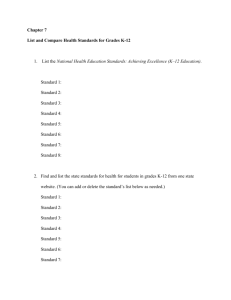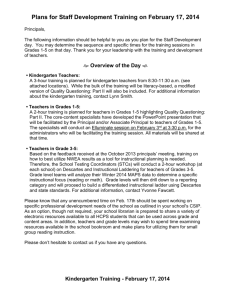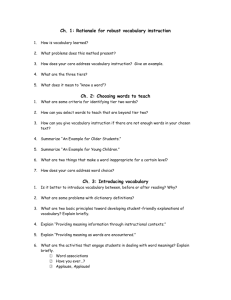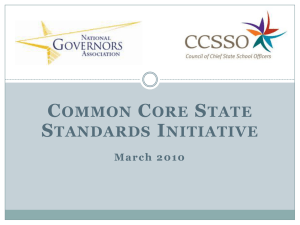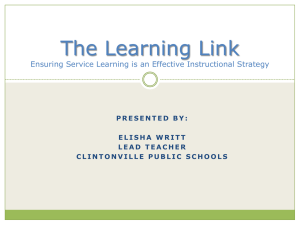Social Studies COS Position Statements
advertisement
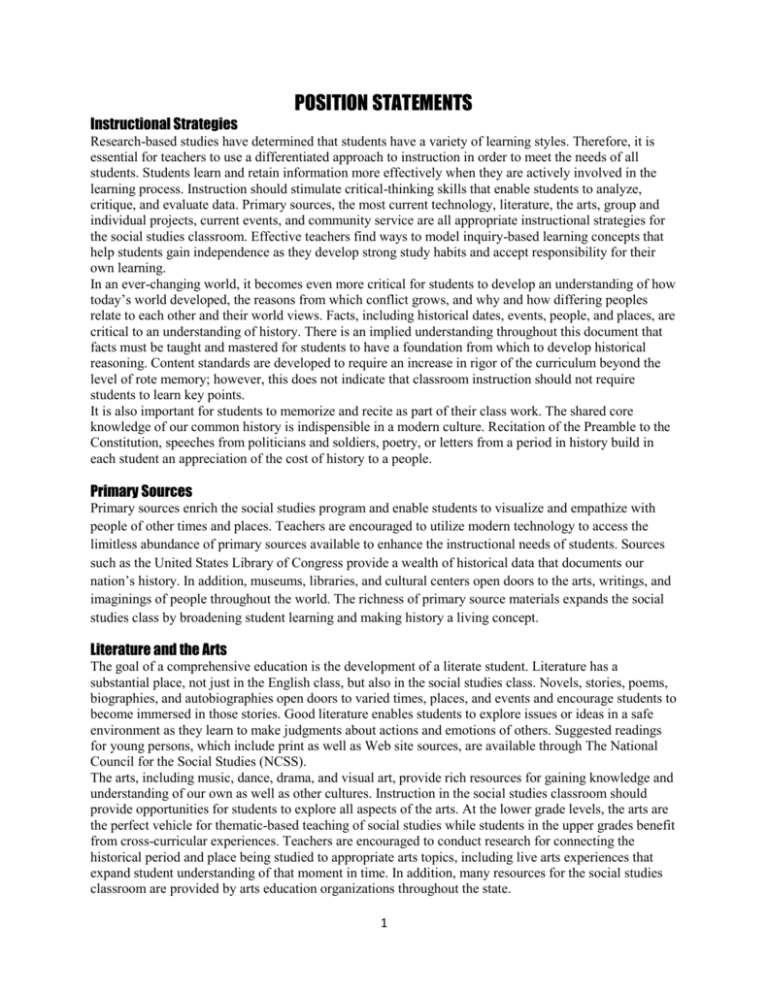
POSITION STATEMENTS Instructional Strategies Research-based studies have determined that students have a variety of learning styles. Therefore, it is essential for teachers to use a differentiated approach to instruction in order to meet the needs of all students. Students learn and retain information more effectively when they are actively involved in the learning process. Instruction should stimulate critical-thinking skills that enable students to analyze, critique, and evaluate data. Primary sources, the most current technology, literature, the arts, group and individual projects, current events, and community service are all appropriate instructional strategies for the social studies classroom. Effective teachers find ways to model inquiry-based learning concepts that help students gain independence as they develop strong study habits and accept responsibility for their own learning. In an ever-changing world, it becomes even more critical for students to develop an understanding of how today’s world developed, the reasons from which conflict grows, and why and how differing peoples relate to each other and their world views. Facts, including historical dates, events, people, and places, are critical to an understanding of history. There is an implied understanding throughout this document that facts must be taught and mastered for students to have a foundation from which to develop historical reasoning. Content standards are developed to require an increase in rigor of the curriculum beyond the level of rote memory; however, this does not indicate that classroom instruction should not require students to learn key points. It is also important for students to memorize and recite as part of their class work. The shared core knowledge of our common history is indispensible in a modern culture. Recitation of the Preamble to the Constitution, speeches from politicians and soldiers, poetry, or letters from a period in history build in each student an appreciation of the cost of history to a people. Primary Sources Primary sources enrich the social studies program and enable students to visualize and empathize with people of other times and places. Teachers are encouraged to utilize modern technology to access the limitless abundance of primary sources available to enhance the instructional needs of students. Sources such as the United States Library of Congress provide a wealth of historical data that documents our nation’s history. In addition, museums, libraries, and cultural centers open doors to the arts, writings, and imaginings of people throughout the world. The richness of primary source materials expands the social studies class by broadening student learning and making history a living concept. Literature and the Arts The goal of a comprehensive education is the development of a literate student. Literature has a substantial place, not just in the English class, but also in the social studies class. Novels, stories, poems, biographies, and autobiographies open doors to varied times, places, and events and encourage students to become immersed in those stories. Good literature enables students to explore issues or ideas in a safe environment as they learn to make judgments about actions and emotions of others. Suggested readings for young persons, which include print as well as Web site sources, are available through The National Council for the Social Studies (NCSS). The arts, including music, dance, drama, and visual art, provide rich resources for gaining knowledge and understanding of our own as well as other cultures. Instruction in the social studies classroom should provide opportunities for students to explore all aspects of the arts. At the lower grade levels, the arts are the perfect vehicle for thematic-based teaching of social studies while students in the upper grades benefit from cross-curricular experiences. Teachers are encouraged to conduct research for connecting the historical period and place being studied to appropriate arts topics, including live arts experiences that expand student understanding of that moment in time. In addition, many resources for the social studies classroom are provided by arts education organizations throughout the state. 1 Global Connections The NCSS deems it essential for students to develop an understanding of the realities of global interdependence among world societies and the United States’ place in a global society. Students need to be able to address international issues such as human rights, the environment, and economic competition and interdependence. In order for the United States to maintain its competitive edge, students need an understanding of the peoples of many cultures and civilizations who developed ideas, institutions, and ways of life that are both different from and similar to their own. Activities that encourage students to examine events from the perspectives of other cultures and religions are essential in helping students clarify their understandings and broaden their viewpoints. These activities also allow students to appreciate differences and similarities among citizens of the United States and how these bind them together in unity as a free people. Through the study of others, students can better understand themselves and can better achieve the goal of becoming responsible citizens of this nation and of today’s global society. Service Learning Service learning is a teaching and learning method that connects meaningful community service experiences with academic learning and personal growth. Students in Grades K-12 can utilize the knowledge and skills learned in the classroom to address real needs in the community. Teachers should encourage students to work toward developing service-learning projects that seek to address actual needs of the community in an innovative manner. In this way, students gain valuable learning experiences that deepen their understanding not only of the curriculum, but also of civic responsibility, including what it means to be responsible community members. The National Service-Learning Clearinghouse’s Web site is an excellent resource for teachers and students seeking to find information and projects to help make a difference in the life of the community. Current Events Knowledge about and analysis of current events are vital to responsible citizenship. The inclusion of a study of current events is an essential element of the Grades K-12 social studies program. Current events should be incorporated at each grade level in all social studies courses, and teachers should make every effort to relate the curriculum being studied to events occurring in the community, state, nation, and world. Traditional media, social networking outlets, podcasts, blogs, and other reliable options from the World Wide Web are among the many resources that can be used in obtaining and integrating current events into classroom instruction. Technology Technology influences all areas of education. It enables teachers to teach and students to learn in ways not previously possible. If applied appropriately, technology can allow teachers to extend learning experiences beyond the traditional textbook through a variety of resources and methods of instruction. In addition, technology provides opportunities for students to construct and expand their own knowledge and to develop lifelong learning skills to further enhance their development as responsible citizens. As technology is constantly evolving and while equipment and resources are increasingly available to both the teacher and the student, it is incumbent upon instructors to remain current in curriculum planning as well as in instructional methodology. Because technology continues to be an important tool in our everyday lives, it is essential that teachers model and emphasize ways for students to use and manage technological equipment and resources. Instruction that incorporates multiple ways for obtaining information serves to better prepare students for responsible citizenship. In addition, teachers have a responsibility to help students learn to evaluate the validity of information they find in their research, including the Web sites they visit, and to appropriately attribute information used from the Internet. 2

